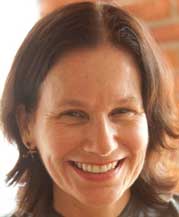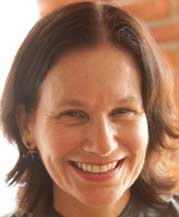 KINGSTON, R.I., November 5, 2014 – First, the bad news: Nearly 70 percent of adults and 17 percent of children in the United States are overweight – a problem that can lead to life-threatening illnesses like diabetes, high blood pressure and heart disease.
KINGSTON, R.I., November 5, 2014 – First, the bad news: Nearly 70 percent of adults and 17 percent of children in the United States are overweight – a problem that can lead to life-threatening illnesses like diabetes, high blood pressure and heart disease.
Now, the good news: Regular physical activity, including something as simple as a brisk morning walk, can reduce obesity, prevent serious ailments and improve life-long health.
Carol Garber, a world-famous clinical exercise physiologist who lives in Providence and New York City, will offer that advice and more during a talk at the University of Rhode Island, on the Kingston campus.
The lecture, “Exercise is Medicine: Integrating Exercise into Health Care,” will be held Thursday, Nov. 20, from 6:30 to 7 p.m., in URI’s Thomas M. Ryan Auditorium in the Center for Biotechnology and Life Sciences, 120 Flagg Road. The talk is free and open to the public.
A panel discussion will follow with Garber and three URI professors: Deborah Riebe, chair of the kinesiology department; Patricia Burbank, associate dean and professor of nursing; and Kathleen Melanson, associate professor in the department of nutrition and food sciences.
“Getting more physical activity isn’t really difficult to accomplish,” said Garber. “Something as easy as getting off the sofa or out of your office chair throughout the day can make a big difference in your health.”
After years of study, medical researchers, doctors and health care workers are sounding a clarion call that physical activity at all ages is crucial to good health.
The benefits of exercise are far-reaching. Exercise controls weight by burning calories. Exercise prevents chronic health problems like Type 2 diabetes, arthritis, heart disease, osteoporosis and some cancers. A good workout stimulates brain chemicals that make people happier and less stressed. And, in the long run, exercise can lower health care costs: a healthier patient needs less medical care.
Our high-tech culture has created a sedentary lifestyle, Garber said. People sit far too long – at work in front of a computer and, later, at home watching television or tinkering with electronic devices for hours on end.
The Centers for Disease Control and Prevention, or CDC, recommends adults get 150 minutes of aerobic exercise every week or 75 minutes of vigorous exercise, or a combination of both.
Children and adolescents should get at least one hour of exercise every day to stay fit, physically and emotionally, Garber said. Research shows that children who exercise do better in school. Exercise is also a good way to manage a common condition among kids today – attention deficit disorder.
Sadly though, health care workers are seeing unprecedented cases of high blood pressure and Type 2 diabetes among children and adolescents, thanks to obesity and high-fat and high-sugar junk food diets.
“This is the first generation of kids since the start of the 20th century that will not experience an increase in life expectancy,” said Garber. “In fact, we expect a decline in life expectancy compared to their parents. This is alarming.”
It’s not enough to just release reports about exercise, she said. Doctors and other health care workers need better training in nutrition and physical activity to counsel their patients about healthy diets and staying fit. Some medical and nursing schools are already offering a nutrition and physical activity curriculum.
“It’s helpful that health care providers keep encouraging patients to improve their diet and physical activity,” she said. “It’s a difficult thing for patients to do on their own. Reinforcement is important.”
Staying active does not have to involve a costly spinning class at the gym, Garber said. Walking, biking and hiking are activities that are fun and free. Brief breaks at work are also beneficial. Walking to a co-workers desk instead of emailing and leaving the office chair as often as possible, maybe for a drink at the bubbler, are two ways to move about.
“Being more active can easily be incorporated into daily life,” she said. “It doesn’t require special equipment or clothing or membership in a gym. It can be as simple as walking around your neighborhood.”
Garber’s clinical practice and her research focus on the role of exercise in preventing and treating chronic diseases. She’s researching how to reduce obesity among toddlers and parents living in urban areas, and she’s developing a home-based exercise program for children and adults with spinal muscular atrophy, a rare neurological disease.
Garber is president of the highly-regarded American College of Sports Medicine, an international organization that represents 70 professions in the sports medicine field, ranging from fitness experts to research scientists.
She is also director of the graduate program in applied exercise physiology at Teachers College, Columbia University, and a professor of biobehavioral sciences at the college. She is a fellow of the American Heart Association and the American College of Sports Medicine.
In Rhode Island, she was formerly on the clinical medical faculty at Brown Alpert Medical School, an affiliate faculty member in the Aging Partnership at URI and a leader in public health efforts to improve physical activity through her work with the Rhode Island Department of Health and the American Heart Association.
Garber’s talk is part of the College of Human Science and Services Speaker Series, which showcases the range of the college’s academic diversity while connecting alumni with students, faculty, staff and the outside URI community. Speakers talk about issues involving health, education and human science.
“I am delighted that a world class expert like Carol Garber will deliver the keynote presentation for our speaker series,” said Lori Ciccomascolo, interim dean of the College of Human Science and Services and dean of URI’s Feinstein College of Continuing Education. “I look forward to her message that focuses on the preventive side of health care and the economic and social advantages of using exercise as a way to prevent chronic diseases and improve public health.”
With more than 2,400 undergraduate students, 400 graduate students and six academic departments, HSS is the second-largest college on campus, just behind the College of Arts and Sciences.
HSS is made up of the Department of Human Development and Family Studies; Communicative Disorders; Physical Therapy; Kinesiology; School of Education; Textiles, Fashion Merchandising and Design; and Interdisciplinary Studies in Gerontology and Health Studies, which is the only undergraduate interdisciplinary health program on campus.
Students from the various departments tackle study areas as diverse as textile chemistry, exercise science, teacher preparation, speech and hearing, global health and college student personnel, and they go on to work as designers, physical therapists, teachers, health care employees, and college deans.
Pictured above:
Carol Garber, a renowned clinical exercise physiologist, will discuss the importance of exercise and good health during a talk Nov. 20 at the University of Rhode Island. Photo courtesy of Ira Garber.

